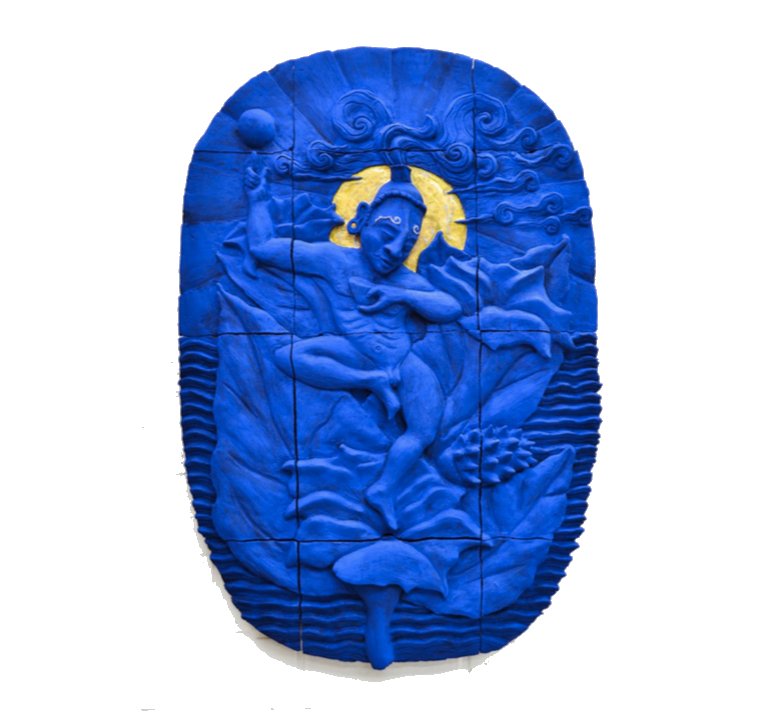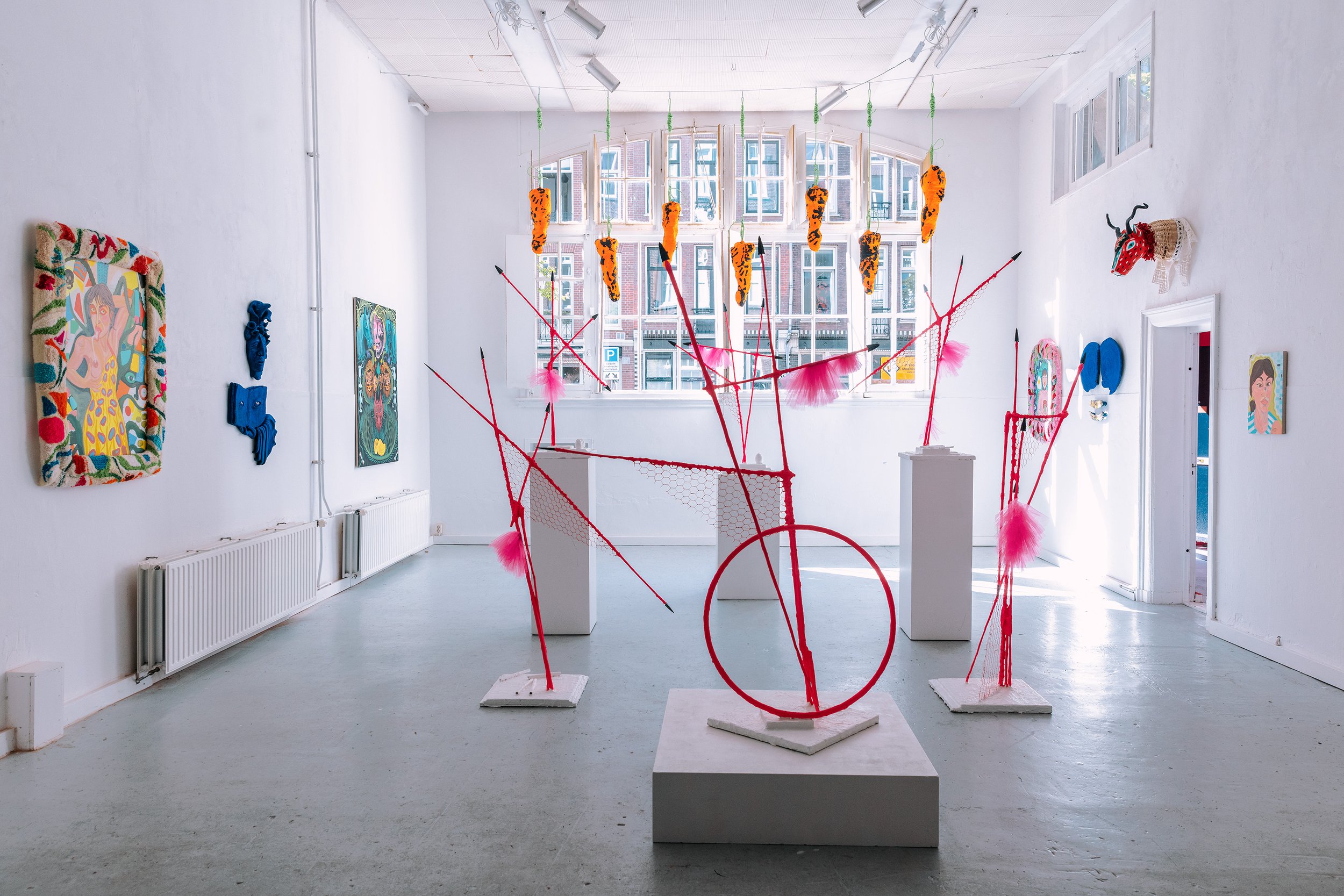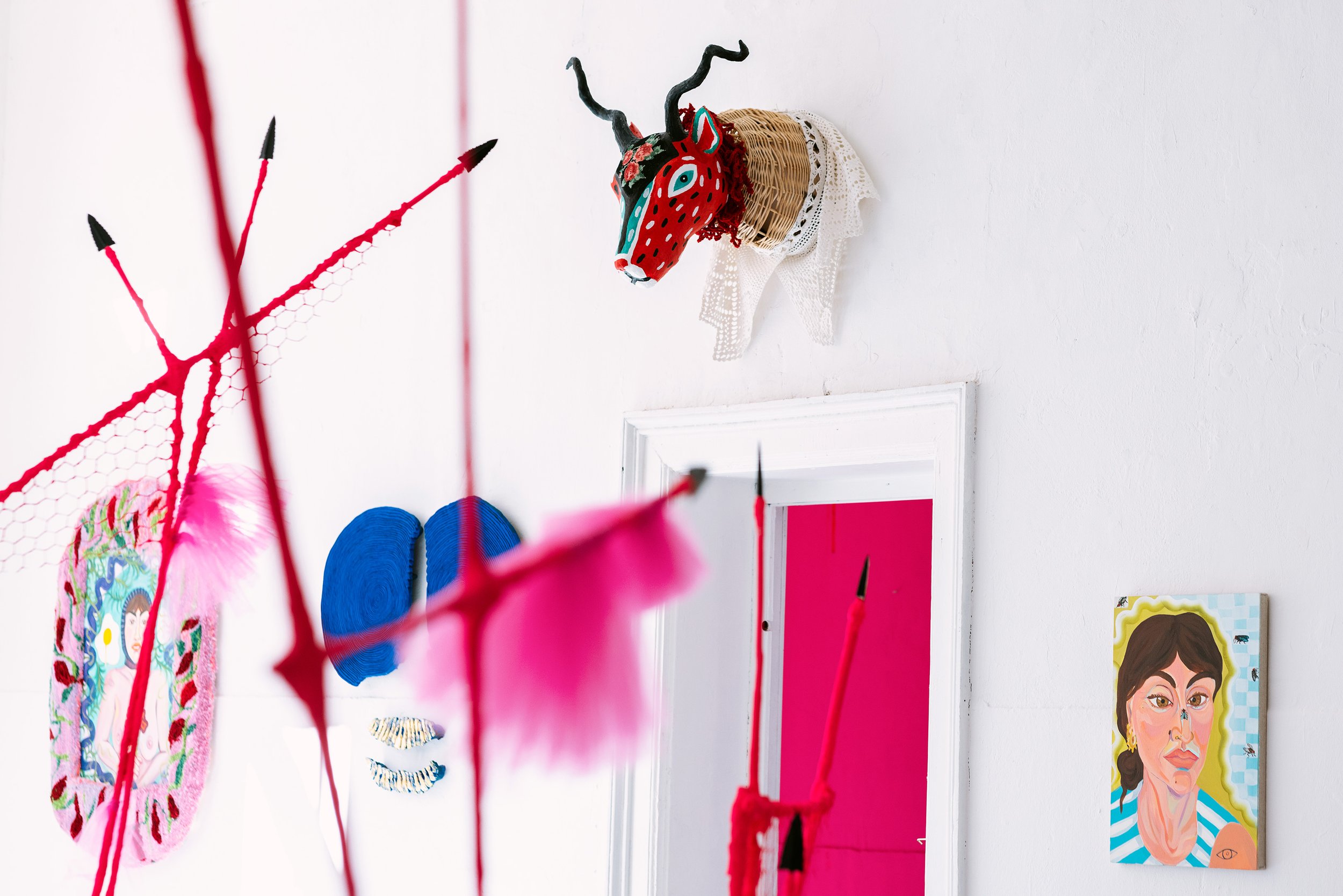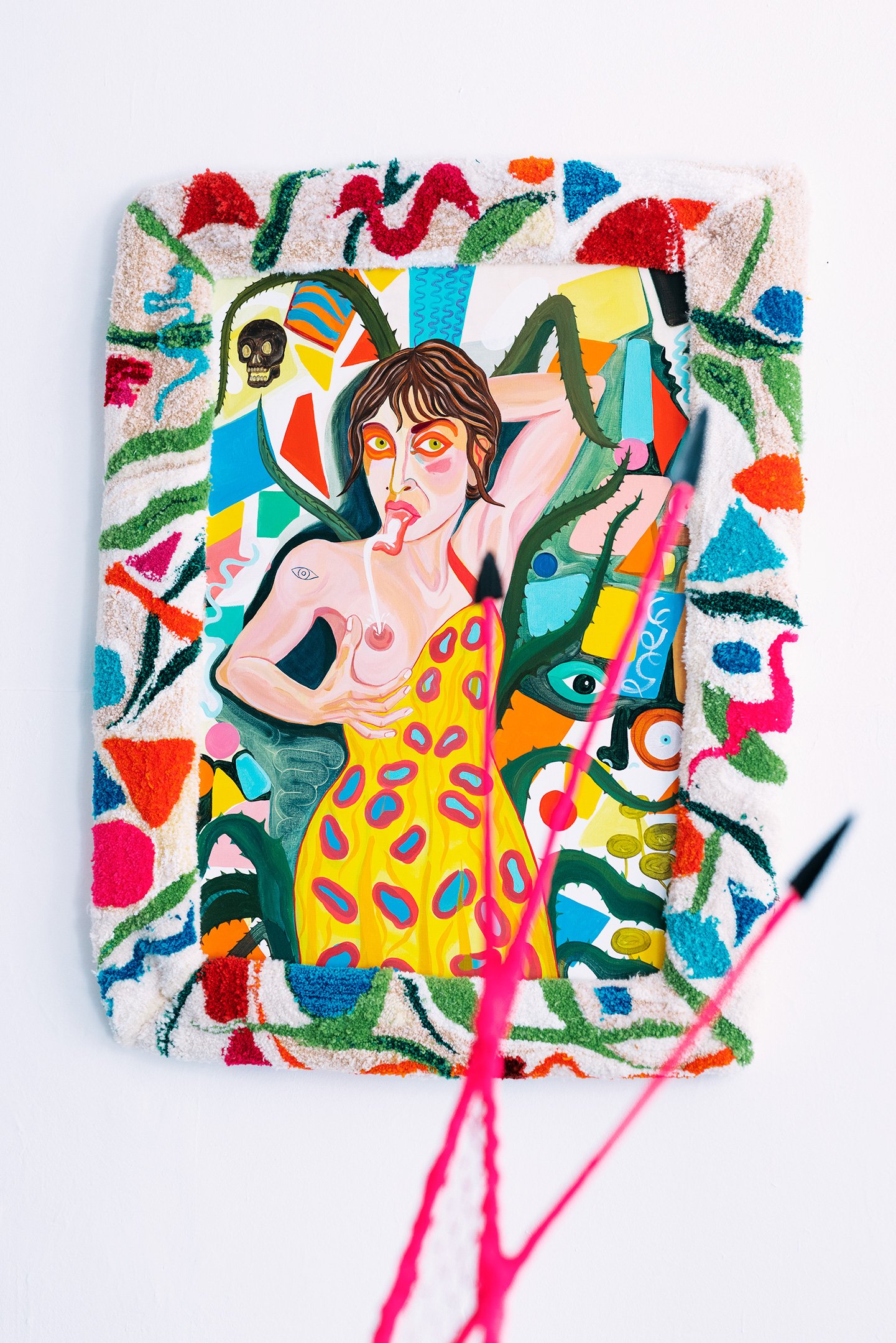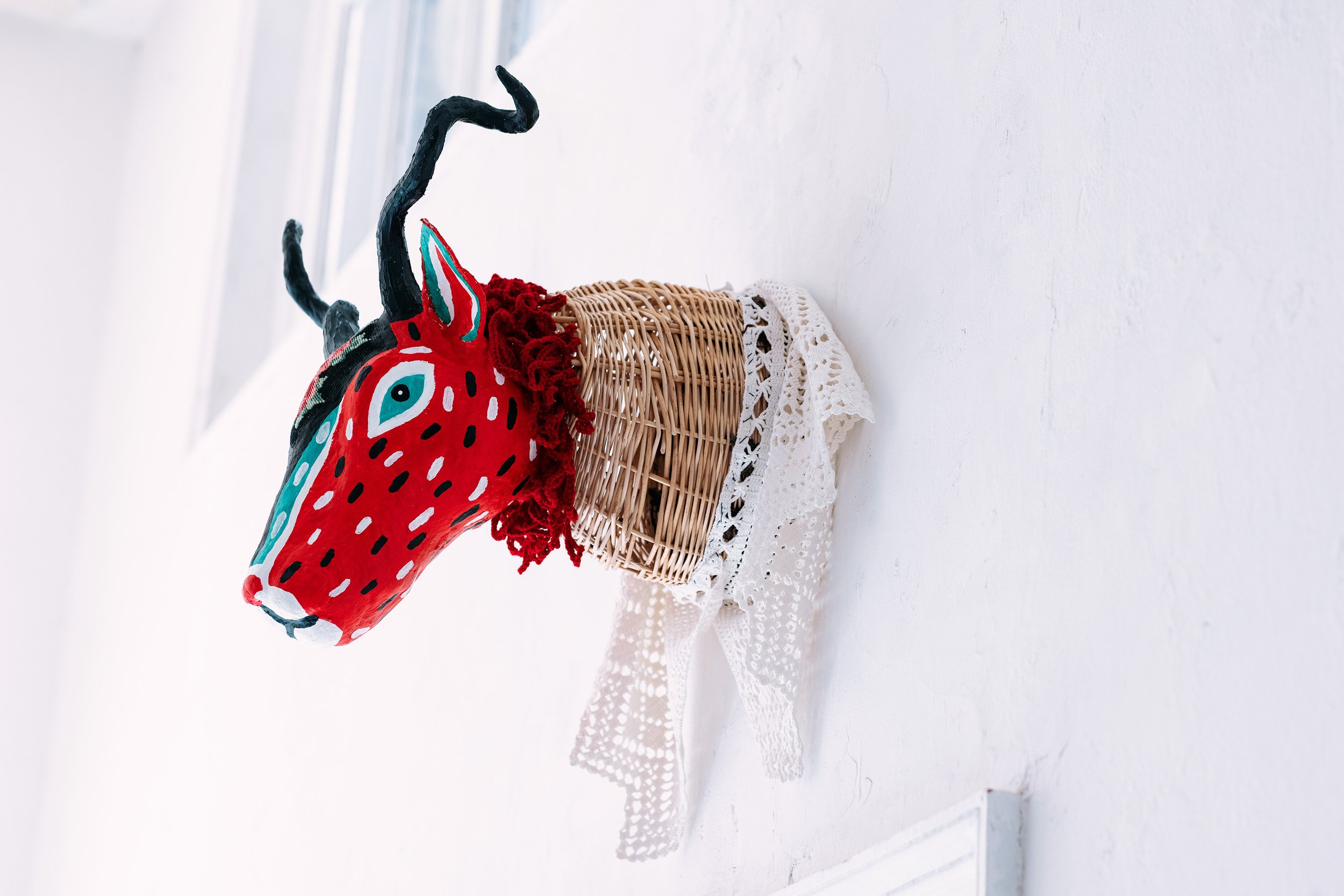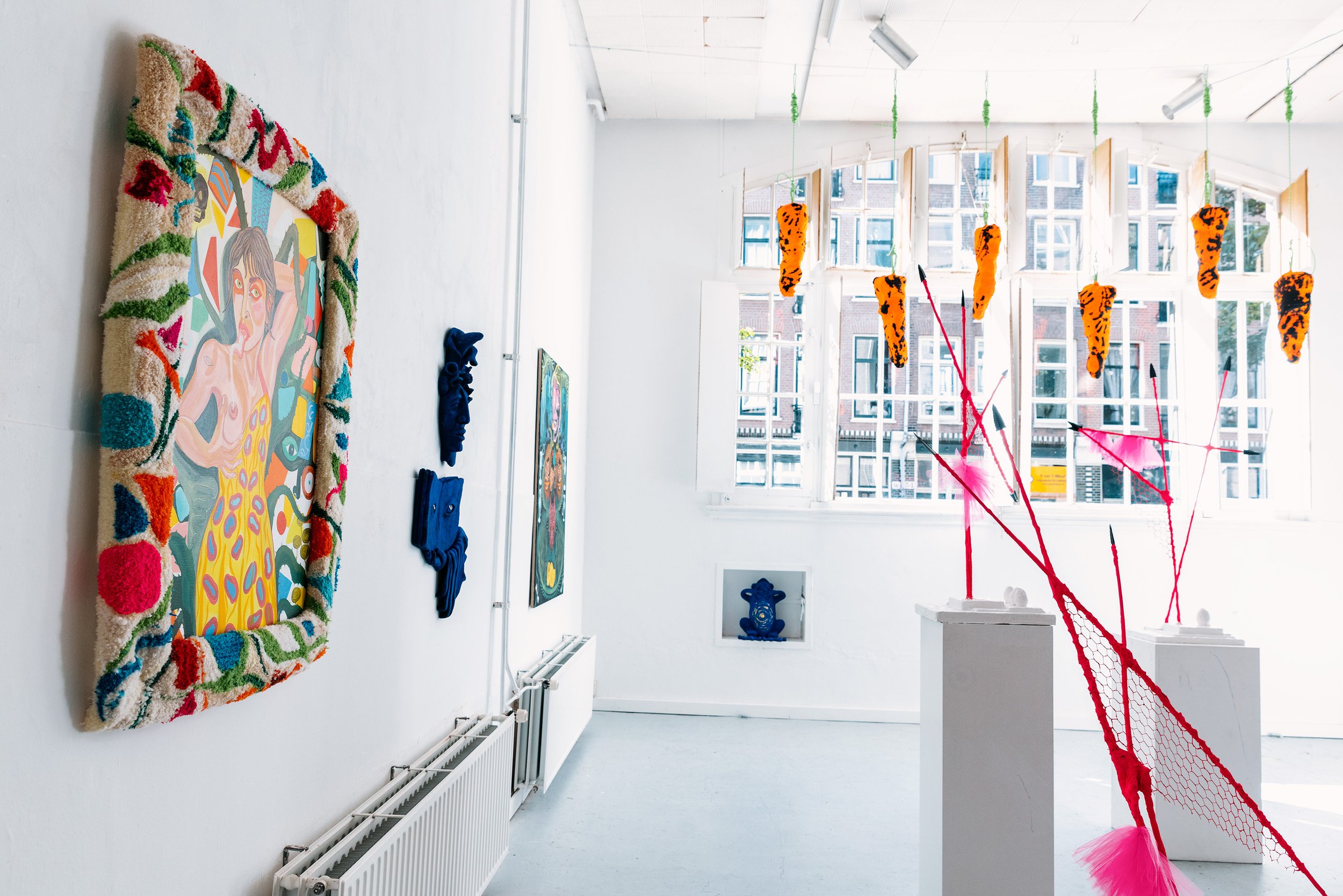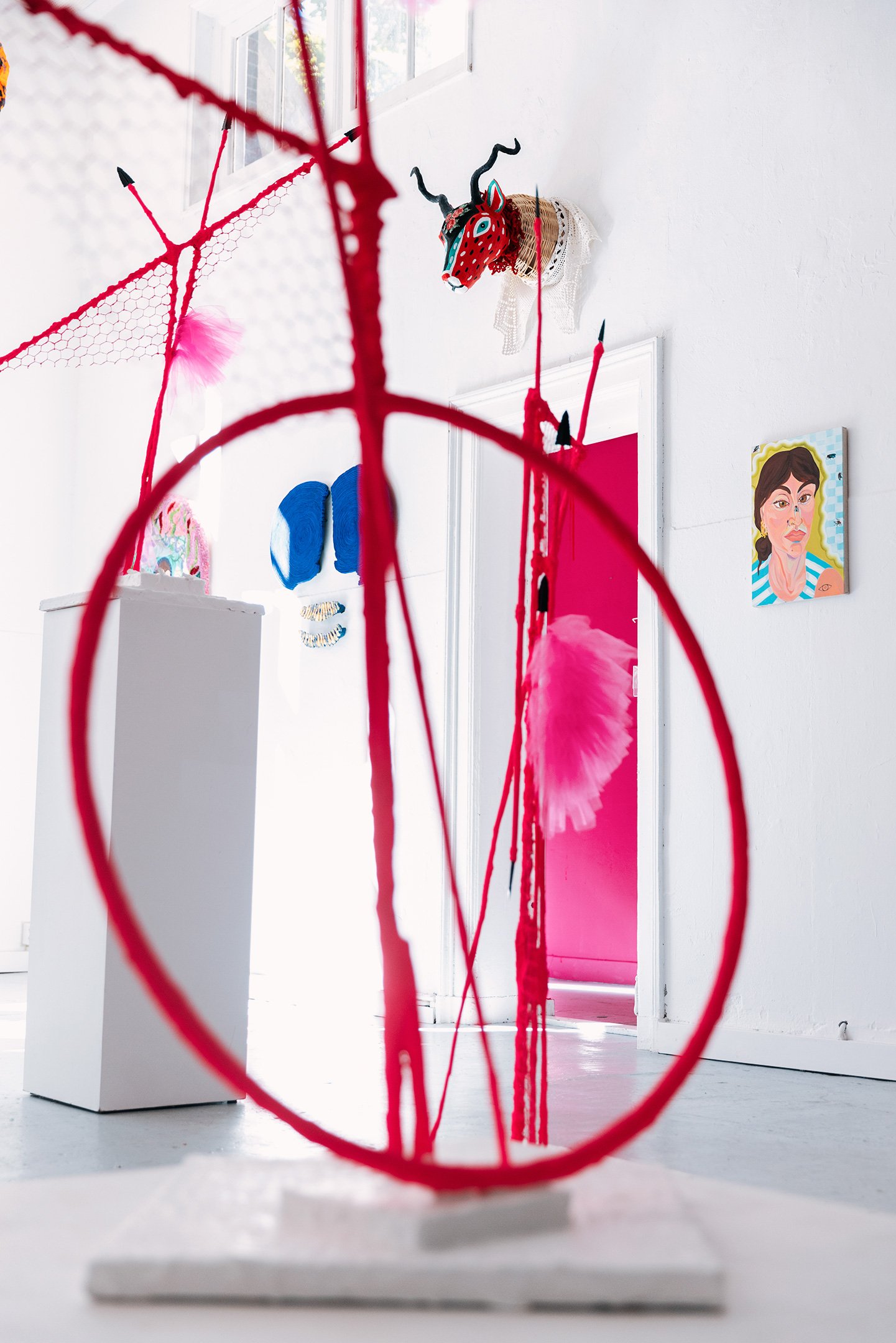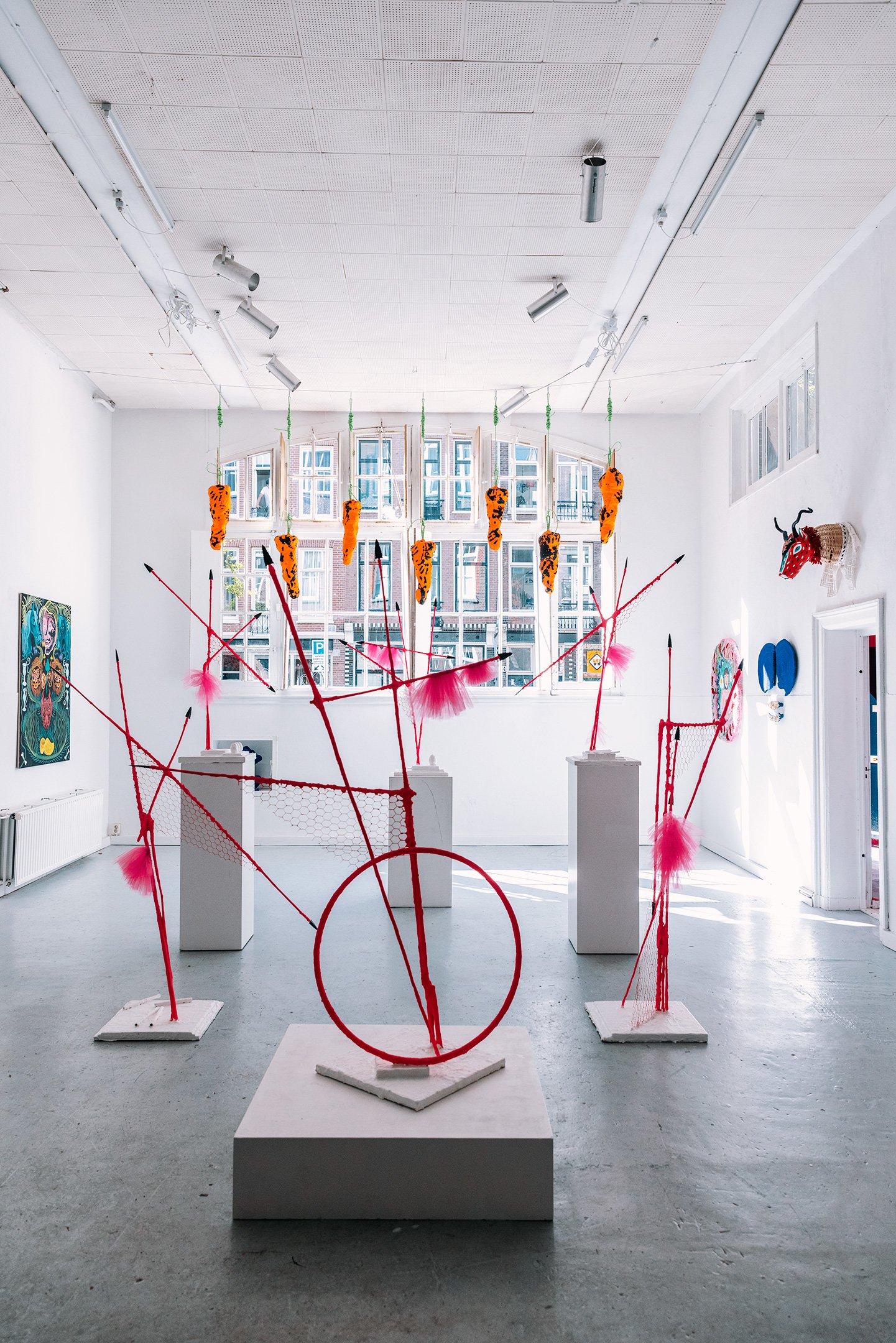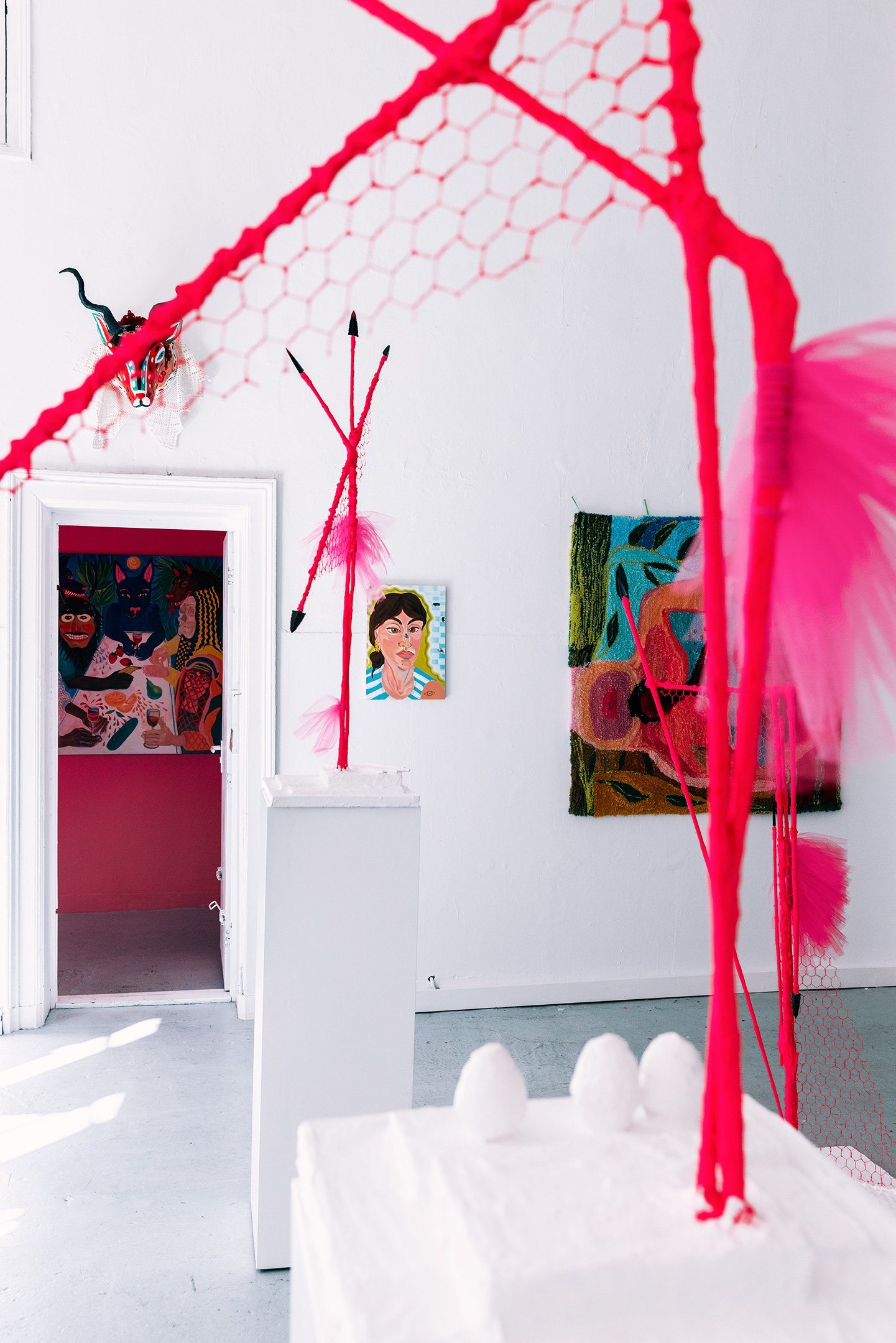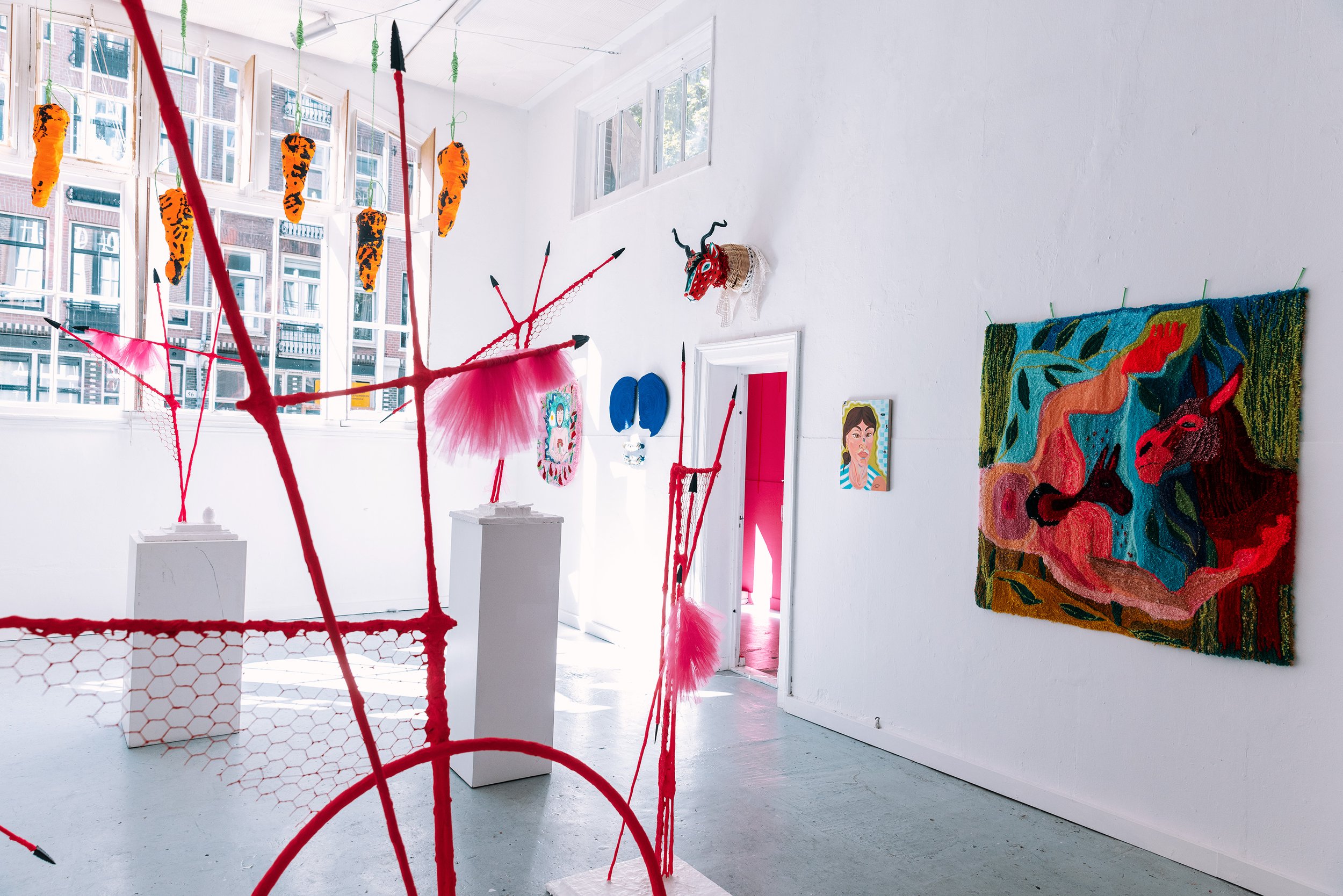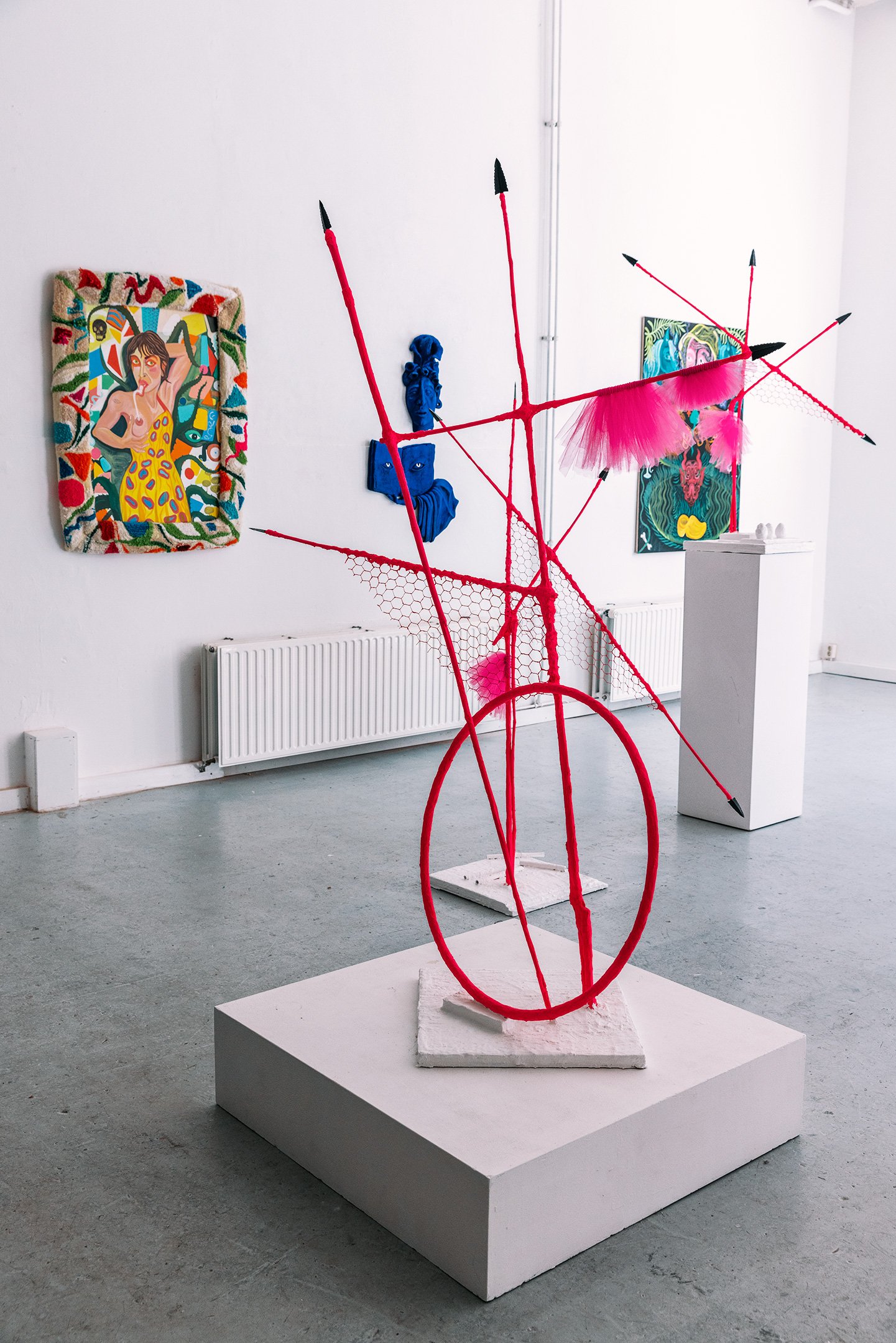This summer, Galerie Fleur & Wouter will present the duo exhibition The Day of the Donkey, with work by Carmen Schabracq and Dodi Espinosa. Both artists have a strong connection with Mexico and a fascination for tradition, craft, and which materials are considered noble and which poor. As a starting point for the exhibition, they took The Day of the Donkey, the most important feast in Otumba, the Mexican village where Espinosa comes from. During this celebration, donkeys are dressed in costumes and sometimes even makeup.
During the opening of the gallery season on Saturday 3 September, 16.00 hrs, we will organise an artist talk with Dodi Espinosa and Carmen Schabracq will give a performance.
Donkey in a tutu
Espinosa previously used the celebration from his native village as inspiration for his sculpture El dia del burro (2018). In this work of a donkey in a tutu, he refers to the ballerinas of Edgar Degas. In the sculptures Espinosa made for this exhibition, he returns to this theme and explores the dark side behind these widely loved works of art. The Corps de ballet, the large group of less important dancers within the ballet, consisted in Degas' time of poor girls who were dependent on powerful patrons of the ballet. This unequal relationship was frequently abused by the patrons.
Espinosa's sculptures in this exhibition are abstract. They show the movement in the dance and symbolise the anonymity of the dancers of the Corps de ballet. Yet each sculpture represents a dancer, and by giving them names, Espinosa removes them from anonymity. Arrowheads in the sculptures symbolise the strength of the dancers. His ballerinas contradict the typical impression of fragile and submissive girls; they are powerful women bent on revenge.
Theatricality of life
The theatricality of life plays an important role in Carmen Schabracq's work. She collects stories and characters from different myths, traditions and her own experiences and uses them to create her own visual narrative. During her research into myths and traditions in Mexico, she visited several villages to experience the celebration of the day of the dead, and saw how people mix modern pop culture with the traditional masks and costumes in the ‘Muerteadas’, the masked Day of the Dead village dance parties. She is fascinated by the Mexican power of mixing cults, materials and colors in their decorations, rituals and daily life.
The Day of the Donkey from the village of Espinosa inspired Schabracq, especially the absurd dressing up of the donkeys. To her the feast is a beautiful and archetypical example of folklore. She took the feast as the starting point for a series of works about the mythology surrounding the donkey worldwide. An important contradiction in this mythology interests her. The animal is seen as stupid and stubborn, but also has great symbolic value, for example as the bearer of Jesus. In the exhibition, she shows masks and paintings around folkloric figures such as the donkey, the devil and the goat.
Noble materials
Both artists are interested in tradition, craft, and which materials are considered noble and which poor. Papier maché is one such material that is considered poor in the art world, but has a craft value in Mexican culture. In addition to this material, Shabracq worked with plaited willow branches and experimented with new textile techniques, with which she made frames around her paintings. Espinosa chose plaster bandage, another poor material. The connotations of healing appealed to him, and with this material he also refers to the way Degas asked his models to stand in one position for a long time, which was sometimes very painful. He also used bamboo, which is fine but also very strong, supple, and light as a ballerina.
About the artists
Carmen Schabracq (1988) works in various media, making paintings, sculptural installations, masks and performances with which she investigates the complexity of human identity. Every human being has many faces, all of which emerge from the perception of the other. By using masks, for example, she shows the different roles of people. Carmen was born in Amsterdam (1988), where she now lives and works. She received her BA in visual arts from the Gerrit Rietveld Academy, and her MA in theatre costume design from the Royal Academy of Fine Arts Antwerp. In 2017- 2018 she received the 'New Makers grant' from the Fonds Podiumkunsten NL, with which she made two in situ performances in Zeeland. Carmen did artist in residencies in Mexico (2019), the Van Gogh AiR in Zundert (2020), in Bulgaria (2021) and at art house SYB in Beetsterzwaag (2021). She exhibited in Stedelijk Museum Breda (2022) and numerous galleries and art spaces.
Dodi Espinosa was born in Mexico City (1985), but lives and works in Belgium. His unconventional imagery shows influences of surrealism and shamanism. Espinosa believes in the transformative power of art and casts a glance at historical and current issues. He usually works in clay, which he then paints, but he also uses materials such as bronze, wood, textiles and papier-maché. Dodi had a solo exhibition at Beautiful Distress, Amsterdam (2022). He also took part in group exhibitions in M HKA (in collaboration with. NICC), Antwerp (2019), the Fries Museum, Leeuwarden (NL, 2020), W139, Amsterdam (2020) and Mu.Zee, Ostend (2019 and 2022).
